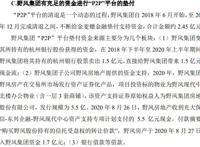子谦译文|创业教什么:六种主流创业理论的对比研究(47)
2023-06-03 来源:旧番剧
为了更有效地说明表2和表3中的概念的相似性和差异,作者创建了一个图表,根据给定的创业方法的强调程度来显示分配给这9个概念维度的权重,制定了一套资格标准,以每个维度在0到3的等级(2)上进行分配。如果某个维度被认为是给定方法的理论或处方的基础,则该维度被视为骨干维度,那么该方法在该维度的等级为“ 3”级;如果某个创业方法直接涉及讨论或处方中的一个维度,则该方法在该维度的等级为“ 2”级;如果某个方法通过接触相似或相关概念间接或隐式地引用了某个维度,则该方法在该维度的等级为“1”级;最后,如果某种方法没有明确或隐含地解决某个维度的任何方面,并且可以安全地假定该维度未告知该特定方法的任何相关方面,则该方法在这个维度的等级为“ 0”级 。根据这项定量的研究得出了图2,该图显示了创业方法相互之间,且和效果逻辑理论是如何比较的。The inter-rater agreement betweenthetwo authorswho independently conducted grading was relatively high, with 41 of the 54 grades being the same. Consensus was achieved in the remaining dimensions through extensive discussions among theauthors and a detailedreview of literature. The 13 grades requiring such discussions and reviewing were distributedas follows: three each on team collaboration andvalue creation; two each on resource management, continuous learning, and iterative process; and one on knowledge expansion. All grades on uncertainty management, redirection power, and stakeholder interaction were in agreement between the two authors. The entrepreneurial methods involved the most in such discussions were those that were given a low grade, since absence of a dimension proved to be more difficult to substantiate than presence.
猜你喜欢
动漫推荐
免责声明:动漫番剧数据来源网络!本站不收费,无vip,请勿上当!
www.jiufanju.com-旧番剧





















